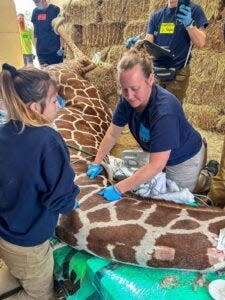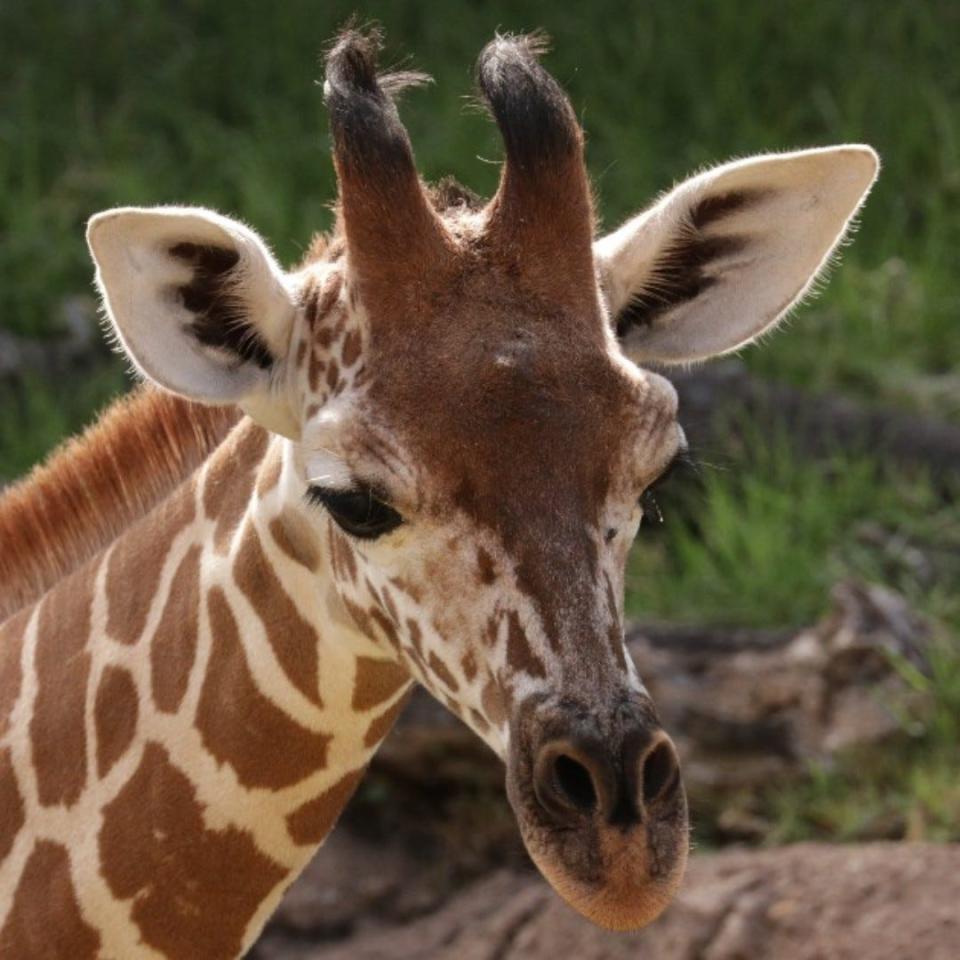Kendi, a Milwaukee County Zoo giraffe, required surgery for a unique breeding injury

Kendi, a 4-year-old male giraffe at the Milwaukee County Zoo, is recovering from a surgery that had never before been performed on a giraffe, according to the zoo.
Kendi was attempting to breed with Maya, a 6-year-old female giraffe, when he injured his prepuce, the sheath of skin that covers the penis. The zoo's statement notes that most breeding injuries in giraffes don't require intervention and that Kendi's specific injury "is believed to have never been seen before in the species."
The zoo's animal care team noticed that the injury had become infected in early April and gave Kendi pain medication, antibiotics and topical treatment. However, those measures proved unsuccessful.
Once it was determined that Kendi would need to be immobilized to better determine how to treat his injury, the zoo started outreach to veterinary specialists. This was necessary because, according to the zoo, a number of factors complicate giraffe immobilizations and anesthetizations.
Their large size — Kendi is nearly 14 feet tall and weighs almost 2,000 pounds — makes giraffes difficult to move and position for procedures, and injuries can happen when they're anesthetized because, according to the zoo, "they have a long way to fall." Additionally, giraffes' long necks can be damaged during anesthetic procedures if they're not properly supported, and blood pressure and ventilation management are also complicated by the animals' long necks.
Ultimately, a team of specialists came together to help Kendi, from the zoo's animal care staff to veterinary professionals from the University of Wisconsin-Madison School of Veterinary Medicine, the Kettle Moraine Equine Hospital and Regional Equine Dental Center and the Henry Vilas Zoo. Also, the zoo's grounds, forestry and maintenance departments modified the giraffe barn with extra padding to set it up for the procedure.
On April 11, the team immobilized and anesthetized Kendi and determined that he needed a reefing. The reefing procedure — removing a portion of the giraffe's prepuce and repairing the remaining portion — was done, and the entire process took about two hours.

Kendi is recovering well, and he'll remain separate from the female giraffes until July. Animal care staff will monitor him closely when he's allowed to resume breeding.
"Many of the people involved had never participated in a giraffe anesthetic procedure before, and those who had, hadn't done one in our giraffe barn or with our particular setup," the zoo's senior staff veterinarian Christy Rettenmund said. "This was a new and very complex procedure for us. Being prepared for any eventuality is the key to reducing anesthetic risk in any species we work with, and that's a big part of why Kendi's procedure was so successful."
This article originally appeared on Milwaukee Journal Sentinel: Giraffe at Milwaukee County Zoo requires surgery for breeding injury

